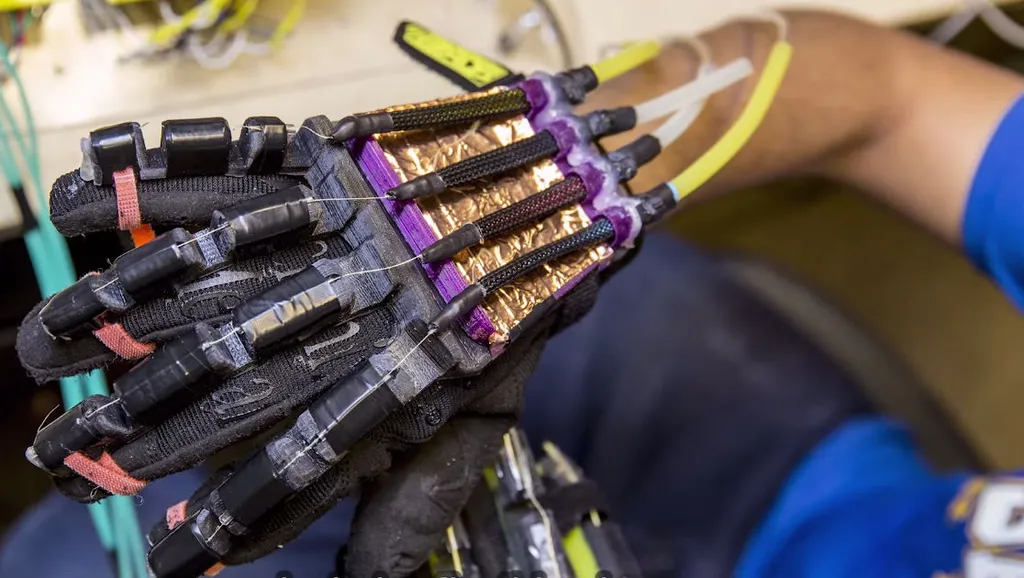New VR gloves designed by engineers at UC San Diego employ “soft robotics” to deliver tactile feedback to the wearer as they touch and interact with virtual objects.
The system is designed to mimic the movement and sensation of muscle with a a component called a McKibben Muscle. The glove is structured in a layer of latex chambers, surrounded on the surface by braided muscles. The entire glove — including the muscles — is connected to a circuit board, and as you interact with virtual objects, the gloves inflate and deflate to replicate pressure. It’s a finely tuned process designed to give you the sensation you’re actually lifting and touching objects, just like you would in the real world.
In theory, the gloves could paired with other technologies like a Leap Motion sensor to simulate a wide range of activities.
“This is a first prototype but it is surprisingly effective,” Professor Michael Tolley says on the UC San Diego website. “Our final goal is to create a device that provides a richer experience in VR…but you could imagine it being used for surgery and video games, among other applications.”
This type of technology has been used in similar ways before — though not exactly in the muscle structure described above. The Kor-FX and Hardlight Suit, for example, are VR-ready vests that allow you to “feel” impacts and pressure on your chest through haptic feedback.
Jointly, these technologies may someday be used to immerse you entirely in a virtual world, whether for entertainment, gaming or more practical purposes like situational training.
Of course, they will remain separate pieces of gear for now, at least until engineers or developers figure out a way to create one, seamless outfit or suit. That would require overcoming obstacles like interconnectivity problems that occur with other kinds of electronics. A full-body suit would need to be able to differentiate between pressure, impact, or muscle simulations on different areas of your body, which would also need to be fine-tuned from a software perspective. Video games, for instance, would have to include information such as what part of the player’s body a bullet hit.
The gloves are not a commercially viable product just yet, and they probably won’t be for some time. Michael Tolley, a mechanical engineer professor working with the team who came up with the VR gloves, said in a prepared statement they are nothing more than a “first prototype,” though adding they’re “surprisingly effective.”
The team was able to 3D-print a soft glove exoskeleton mold — or case mold, if you will — to serve as proof of a mass production opportunity. In other words, they are actively displaying support for a commercial release of such a device.
Kayla Matthews writes about artificial intelligence, virtual reality and other tech for websites like VentureBeat and MakeUseOf. To read more posts from Kayla, read and subscribe to her tech blog, Productivity Bytes.





























